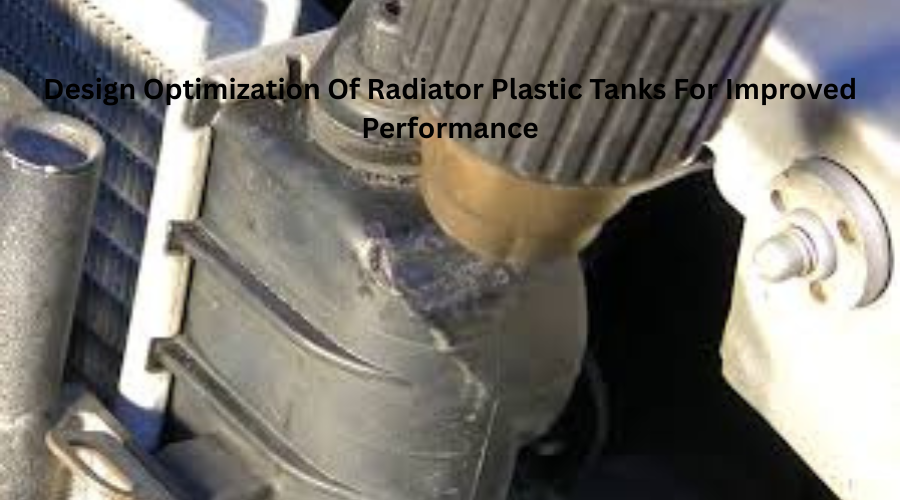Why Make Radiators Out Of Plastic?
- linghangtechnology
- Mar 26
- 4 min read

When it comes to automotive cooling systems, radiators play a vital role in regulating engine heat and ensuring smooth vehicle operation. Traditionally, radiators were made from metals like copper and aluminum, but in recent years, plastic radiators have gained significant popularity. If you are looking for a reliable manufacturer of auto radiator plastic tank, you might wonder why so many automakers and aftermarket suppliers are shifting towards plastic-based radiators. Let’s dive deep into the benefits of plastic radiators and understand why they are becoming the preferred choice.
The Evolution of Radiators in Vehicles
Earlier, copper and brass radiators controlled the automotive industry due to their excellent heat conductivity. However, they were expensive, heavy, and susceptible to corrosion. The introduction of aluminum radiators brought significant weight reduction and cost benefits, making them a common choice in modern vehicles. But the real game-changer came with the inclusion of plastic tanks in radiator design, providing numerous advantages that cater to today’s automotive demands.
Key Benefits of Plastic Radiators
1. Weight Reduction for Better Fuel Efficiency
One of the biggest reasons manufacturers prefer plastic radiator tanks is their lightweight nature. Plastic is noticeably lighter than metal, which reduces the overall weight of the vehicle. A lighter vehicle consumes less fuel, leading to improved fuel efficiency and reduced emissions. This is a crucial factor for automakers striving to meet stringent environmental regulations.
2. Cost-Effectiveness
Plastic radiators are cheaper to produce than traditional metal radiators. The manufacturing process of plastic tanks involves injection molding, which is faster and more cost-efficient than metal fabrication. This makes plastic radiators an economical choice for both original equipment manufacturers (OEMs) and aftermarket suppliers.

3. Corrosion Resistance
Unlike metal, plastic does not rust. Traditional metal radiators are prone to corrosion over time, especially when exposed to coolant mixtures and external environmental factors. Plastic radiators eliminate this issue, leading to a longer lifespan and reduced maintenance costs.
4. Improved Durability and Flexibility
Plastic is known for its flexibility and resistance to impact. Metal radiators, especially those made from aluminum, can be brittle and may develop cracks due to vibration and thermal expansion. Plastic tanks, on the other hand, are more resilient and can withstand extreme temperature variations without cracking or leaking.
5. Ease of Manufacturing and Design Flexibility
With plastic, complex shapes and designs can be easily achieved through molding processes. This allows automakers to customize radiator designs according to the specific requirements of various car models. The ability to mold intricate features directly into the plastic saves time and resources compared to welding or soldering metal parts.
6. Efficient Heat Dissipation
Although metal is a better conductor of heat, modern plastic-aluminum hybrid radiators effectively manage engine cooling by combining the best properties of both materials. The aluminum core handles heat transfer efficiently, while the plastic tanks provide lightweight durability and resistance to external damage.
Are There Any Downsides to Plastic Radiators?
Despite their numerous benefits, plastic radiators do have some drawbacks. They can become fragile over time, especially in extreme cold conditions. However, advancements in high-quality polymer materials have significantly improved their lifespan and resistance to harsh weather. Additionally, plastic tanks are not as repairable as metal radiators; if they crack, replacement is often the only option.
The Future of Automotive Radiators
With continuous innovations in polymer technology, plastic radiators are expected to become even more durable and efficient. The trend towards lightweight vehicles and improved fuel efficiency further cements the importance of plastic radiators in modern automobiles. As manufacturers refine their processes, we can expect even more cost-effective and sustainable solutions in the future.
Conclusion
The shift towards plastic radiators is a result of the automotive industry’s need for lighter, cost-effective, and durable components. While metal radiators have their place, plastic-aluminum hybrid radiators provide a balanced solution that enhances performance, longevity, and efficiency. If you are in the market for a reliable radiator solution, plastic radiators should definitely be on your radar.
FAQs
1. Are plastic radiators as durable as metal ones?
Yes, plastic radiators are designed to be durable and resistant to corrosion. While they may not last as long as high-end metal radiators, they offer excellent longevity with proper maintenance.
2. Can plastic radiator tanks be repaired?
In most cases, repairing a cracked plastic radiator tank is not practical. Replacement is the preferred solution, as adhesives and sealants may not provide a long-term fix.
3. Do plastic radiators affect engine cooling efficiency?
No, modern plastic-aluminum hybrid radiators are engineered to provide optimal cooling performance while offering weight reduction benefits.
4. Why are plastic radiators more common in newer vehicles?
Plastic radiators are lightweight, cost-effective, and corrosion-resistant, making them an ideal choice for modern fuel-efficient vehicles.
5. How long do plastic radiators last?
With proper maintenance, plastic radiators can last 7 to 10 years or more, depending on driving conditions and coolant quality.
By understanding the advantages of plastic radiators, you can make a well-researched choice when opting for the best cooling system for your vehicle.






Comments